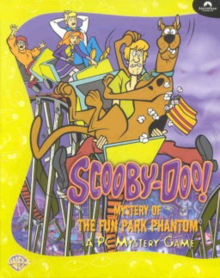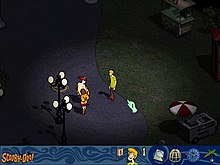
Scooby-Doo is an American media franchise owned by Warner Bros. Entertainment and created in 1969 by writers Joe Ruby and Ken Spears through their animated series, Scooby-Doo, Where Are You!, for Hanna-Barbera. The series features four teenagers: Fred Jones, Daphne Blake, Velma Dinkley, and Shaggy Rogers, and their talking Great Dane named Scooby-Doo, who solve mysteries involving supposedly supernatural creatures through a series of antics and missteps, while traveling using a brightly colored van called the "Mystery Machine". The franchise has several live-action films and shows.
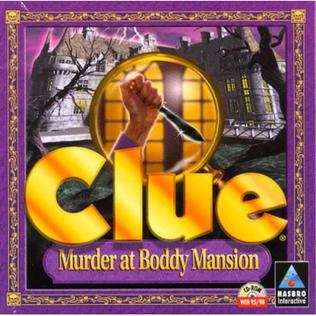
Clue is a 1998 video game based on the board game of the same name. It is also known as Clue: Murder at Boddy Mansion or Cluedo: Murder at Blackwell Grange, depending on whether the country of release used American or British English.

Scooby-Doo! Mystery Mayhem is a third-person action-adventure video game based on the Scooby-Doo franchise. The game was developed by Artificial Mind and Movement and published by THQ in 2003 for the Game Boy Advance. It was later released for the PlayStation 2, GameCube, and Xbox in 2004.
Engineering Animation, Inc., or EAI, was a services and software company based in Ames, Iowa, United States. It remained headquartered there from its incorporation in 1990 until it was acquired in 2000 by Unigraphics Solutions, Inc., now a subsidiary of the German technology multinational Siemens AG. During its existence, EAI produced animations to support litigants in court, wrote and sold animation and visualization software, and developed a number of multimedia medical and computer game titles. Part of EAI's business now exists in a spin-off company, Demonstratives.

Scooby-Doo and the Cyber Chase is a 2001 American direct-to-video animated science fiction comedy mystery film, and the fourth in a series of direct-to-video animated films based on the Scooby-Doo franchise. It was released on October 9, 2001. The film was produced by Hanna-Barbera Cartoons and Warner Bros. Animation. In spite of its grimmer atmosphere, it also has a lighter tone, similar to its animated predecessor, Scooby-Doo and the Alien Invaders.

Scooby-Doo! Unmasked is a platform game based on the Scooby-Doo franchise. It was developed by Artificial Mind and Movement and published by THQ for the Xbox, PlayStation 2, GameCube, Game Boy Advance, and Nintendo DS.
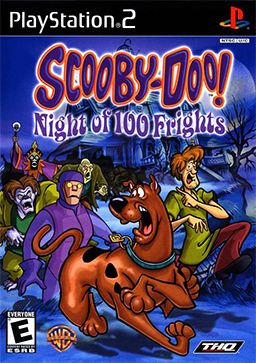
Scooby-Doo! Night of 100 Frights is a 2.5D platform game developed by Heavy Iron Studios and published by THQ for the PlayStation 2, GameCube, and Xbox. The game was released on May 22, 2002, in North America and was released later that year in PAL regions. It was the first Scooby-Doo! video game on sixth-generation consoles. The PlayStation 2 version became a Greatest Hits title in May 2003. The game has a follow-up titled Scooby-Doo! Mystery Mayhem.

Scooby-Doo! Classic Creep Capers is an adventure game published by THQ for the Nintendo 64 and Game Boy Color, based on the Hanna-Barbera cartoon Scooby-Doo, Where Are You!. The Nintendo 64 version, developed by Terraglyph Interactive Studios, was released in November 2000, while the Game Boy Color version was developed by Digital Eclipse Software, and released in February 2001. A PlayStation version, identical to the Nintendo 64 version, had been in development by Terraglyph Interactive Studios but was later cancelled.

Scooby-Doo Mystery is the name of two video games released by Acclaim Entertainment in 1995 and licensed by Sunsoft based on the Scooby-Doo animated series. One of the games was released for the Sega Genesis and features a more traditional adventure game-style interface. The other title, released for the Super Nintendo Entertainment System, is an adventure game with platforming elements. Both were released only in North America. In both games, players take control of Shaggy Rogers and Scooby-Doo, who help solve various mysteries with other members of Mystery Incorporated who serve minor roles during gameplay.

Scooby-Doo! Mystery Adventures is a 3-disc compilation box set of educational computer games based on the Scooby-Doo franchise, and developed by The Learning Company.

Scooby-Doo! Mystery Incorporated is an American animated television series serves as the eleventh incarnation of the Scooby-Doo media franchise created by Hanna-Barbera, as well as the first that was not originally run on Saturday mornings. The series is produced by Warner Bros. Animation for Cartoon Network UK and premiered in the United States on Cartoon Network on April 5, 2010, with the next twelve episodes continuing, and the first episode re-airing, on July 12, 2010. The series concluded on April 5, 2013, after two seasons and fifty-two episodes.

Scooby-Doo! First Frights is a platform video game developed by Torus Games and published by Warner Bros. Interactive Entertainment. The game released alongside the DVD release of Scooby-Doo! The Mystery Begins. The game features Scott Innes as Shaggy, and the other three main voice-cast members returning from What's New Scooby Doo? This is the fourth Scooby-Doo video game to use a laugh track. A successor to the game, Scooby-Doo and the Spooky Swamp, was released in 2010.

The Hex Girls is a fictional gothic rock band created by writers Rick Copp and David A. Goodman. The members are portrayed by Jennifer Hale, Jane Wiedlin, and Kimberly Brooks. They write and perform original songs for the band. The band made appearances in Scooby-Doo! and the Witch's Ghost, and reappeared in Scooby-Doo! and the Legend of the Vampire, What's New, Scooby-Doo?, Scooby-Doo! Mystery Incorporated and Scooby-Doo and Guess Who?. The subsequent success of Scooby-Doo! and the Witch's Ghost has been attributed to the presence of the Hex Girls, which were seen as queer culture and girl-power icons.

Scooby-Doo and the Cyber Chase is a Scooby-Doo video game based on the Warner Brothers film Scooby-Doo and the Cyber Chase. The game was released for the PlayStation and Game Boy Advance in 2001. The PlayStation version became a "Greatest Hits" title in 2003.

Scooby-Doo! Adventures: The Mystery Map is a direct-to-DVD puppet comedy mystery film, and is the twentieth installment in the Scooby-Doo direct-to-video series. It premiered on July 21, 2013, at San Diego Comic-Con, and was released on July 23, 2013, as a digital download and as a Walmart-exclusive DVD. It was released everywhere on DVD on February 11, 2014.
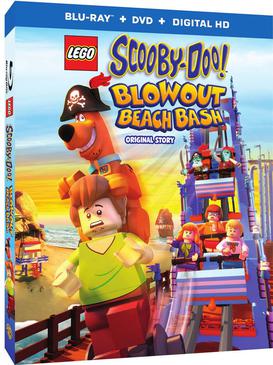
Lego Scooby-Doo! Blowout Beach Bash is a 2017 American animated adventure comedy film, and the twenty-ninth entry in the direct-to-video series of Scooby-Doo films, as well as the second in the series to be based on the Scooby-Doo brand of Lego. It was released digitally on July 11, 2017, and on DVD and Blu-ray on July 25, 2017.

Scooby-Doo! Return to Zombie Island is a 2019 American animated direct-to-video mystery film produced by Warner Bros. Animation and distributed by Warner Bros. Home Entertainment. It is the thirty-third entry in the direct-to-video series of Scooby-Doo films and a standalone sequel to the 1998 direct-to-video animated film Scooby-Doo on Zombie Island, the first film in the Scooby-Doo direct-to-video franchise. The film premiered at the San Diego Comic-Con on July 21, 2019, followed by a digital and home media release on September 3, 2019.

Lego Scooby-Doo was a Lego theme based on the Scooby-Doo franchise created by Joe Ruby and Ken Spears. It is licensed from Warner Bros. Animation and Hanna-Barbera. The theme was first introduced in August 2015. The toy line was accompanied by several shorts, a television special and films based on Lego Scooby-Doo. The Lego Scooby-Doo theme was discontinued by the end of 2017.

Scooby-Doo! and Krypto, Too! is a 2023 American animated direct-to-video mystery film produced by Warner Bros. Animation and is distributed by Warner Bros. Home Entertainment. It is the thirty-eighth entry in the direct-to-video series of Scooby-Doo films.
